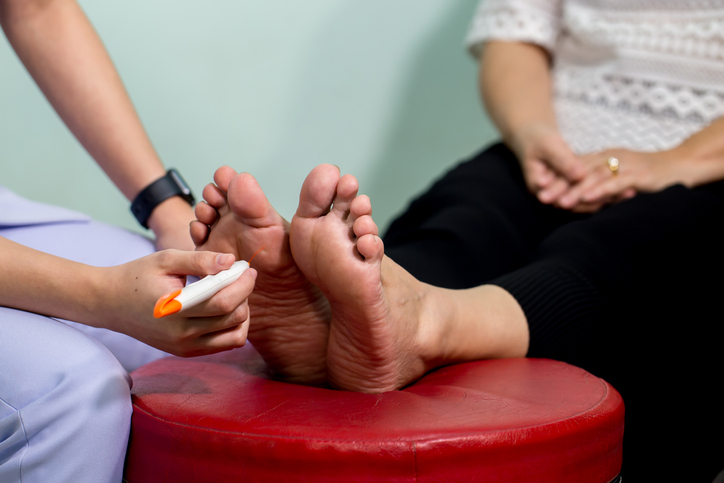Pain
Treatments for Different Types of Foot Pain

Plantar fasciitis — Wear comfortable, well-fitting shoes with arch support; prop up the foot and rest it; do muscle stretches for the foot and heel; take over-the-counter pain medication; consider a steroid or local anesthetic injection.
Heel spurs ― Rest the foot; wear a heel pad specially made for heel spurs; have an orthotic made to wear in the shoe; wear shoes that properly fit and have cushioned soles; take over-the-counter pain medicine; consider physical therapy, ask a health care provider about medical intervention.
Stone bruises — Rest the foot; take over-the-counter pain relievers; apply an ice compress.
Heel fracture — Use crutches to avoid putting pressure on the injured heel; use padding to protect the heel; protect the heel bone with a cast or splint; take over-the-counter (OTC) pain relievers; if OTC pain relievers are not helping, ask a doctor about prescription pain medications; consider physical therapy; ask a health care provider about surgical options.
Metatarsalgia — Place ice on the foot and rest it; wear proper shoes; place inserts in the shoes to reduce pressure on the ball of the foot; take over-the-counter pain medication.
Morton’s neuroma — Place inserts in the shoe to relieve pressure on the nerve; get a steroid injection; try over-the-counter pain relievers; avoid wearing shoes with high heels or narrow toe boxes; avoid activities that aggravate the neuroma; ask a physician about surgical options.
Sesamoiditis — Rest the foot; use an ice compress; place a cushioning pad under the toes; tape the big toe to stop the joint from moving; avoid high-heeled shoes; consider steroid injections.
Fallen arches — Rest the foot; use shoe inserts; place an ice compress on the area; use a cane or brace; go to physical therapy; ask a health care provider if surgery is an option.
Gout — Rest the foot; ice the area; consider medication such as colchicine, nonsteroidal anti-inflammatory drugs or steroids; avoid trigger foods that worsen gout pain.
Bunion — Wear comfortable shoes with wide toe boxes; consider shoe inserts; ask a health care provider about surgical options.
Hammertoe — Wear comfortable shoes with wide, deep toe boxes; do exercises to stretch the toe muscles; ask a health care provider about surgical options.
Claw toe — Avoid ill-fitting shoes and high heels; do stretches for the toe joints; use shoe inserts; ask a health care provider about surgical options.
Ingrown toenail — Soak the toe in warm water several times a day; once daily, wedge a piece of gauze between the affected nail and wet skin; consider visiting a podiatrist.
Toe fracture or broken bone fracture — Rest the foot; apply an ice compress; visit a doctor or hospital to check if surgery is required.
Hallux rigidus (stiff big toe) — Take pain relievers; try stretching exercises; consult a physician about surgical options.
Corns and calluses — Choose shoes that fit properly; soak the foot in warm water and use a pumice stone on the area.
Sesamoid fracture — Rest the foot; elevate the foot; use an ice compress; wear foot pads; consider over-the-counter pain relievers; talk with a health care provider about treatment options.
Broken bone at the outer edge of the foot — Rest the foot; place an ice compress on the area; consider over-the-counter pain relievers; schedule a doctor’s visit.






